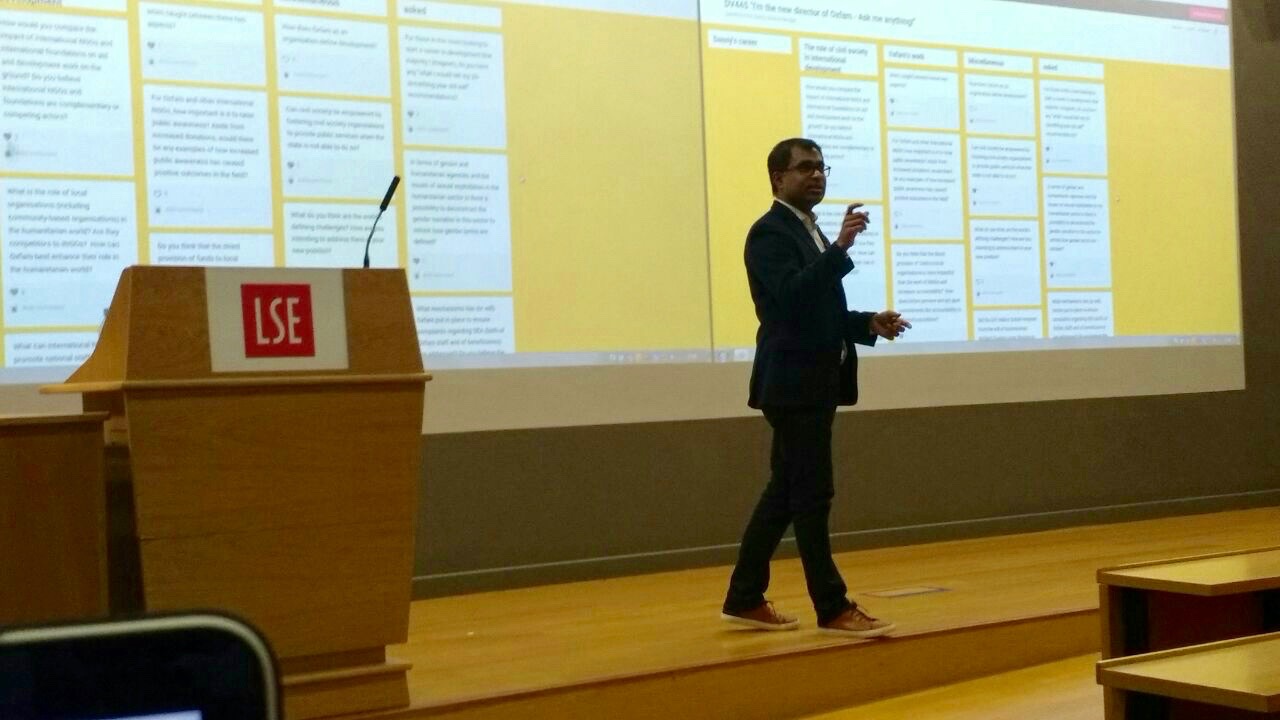What do Kobe Bryant, Serena Williams, LeBron James and Michael Jordan have in common, besides a successful sports career? How can their experience inform diversification policy in resource-dependent countries, especially in the current context of depressed oil prices? In this blog post, Ali Al-Saffar, Assia Elgouacem, and Amir Lebdioui show that the transition of athletes to different activities after retirement to avoid bankruptcy can form the basis of relevant lessons for diversification policy-making in resource-dependent economies.
The confinement of up to four billion people across the globe has led to a destruction of oil demand that is unlike any other precedent the industry has seen. The fall in demand, estimated to reach 25 mb/d year on year in April, has generated significant challenges. For oil-dependent economies, the falling oil prices are hitting revenues hard, economic growth figures have been revised down, and large current account deficits are now projected for some of the most prominent producers. The risks associated with an economy’s heavy reliance on commodity exports are being brought into sharp relief with the market volatility brought on by the COVID shock. This is particularly worrying given that many countries have even increased their export dependence on extractives in the past 15 years. The need to mitigate these risks through broad-based economic diversification is ever more urgent.
This blog post draws inspiration from success stories in the sports world to deliver useful insights for policymakers in oil and gas dependent economies. We propose several parallels between a super athlete’s extraordinary, but finite, physical abilities and a country’s exhaustible resources and find that there are important lessons to be learned from those who have successfully channelled their sporting success to other areas to ensure their financial longevity long after their athletic careers had ended[1].
Just like fossil fuels, an athlete’s physical aptitudes are an exhaustible resource.

Just as a person can be endowed with innate physical ability that can be harnessed towards a successful career in sports, natural resource endowments can provide countries the basis for prosperity. Both physical ability and natural resource endowment are exhaustible and require financial acumen and foresight to ensure that after they are exhausted, wealth can continue to be created. What seems to make or break the chances for success of both the physically talented and the resource-rich country in the long run is their ability (or otherwise) to diversify their revenue streams away from the activity that exploits a finite resource. Perhaps no more fitting an example could be given than that of Kobe Bryant who dominated the world of basketball winning five NBA championship rings and 18 All-Star selections in 20 seasons. At the time of his passing earlier this year, he was starting what was quickly becoming a successful second “act” spanning business and entertainment. As well as creating a venture capital firm and media company, he invested in a sports drink company, established a sports academy and eventually even won an Oscar for an animated short story he wrote and narrated. It was clear that his plan was to ensure his legacy stretched beyond his prime sporting years. He was by no means unique in his success outside the sporting world: from George Foreman to Serena Williams, many sports stars leveraged their career earnings to ensure that the paychecks kept coming in even when they were beyond their physical prime.
In this post, we draw three key lessons on economic diversification for resource-dependent countries:
1. A strategy for managing revenues needs to start well before the exhaustion of the resources that generate a source of income.
From superstardom to bankruptcy, both athletes and governments are at risk of losing it all. From Mike Tyson to Boris Becker, the sporting world is replete with examples of some of its biggest, highest-earning stars falling into financial ruin. More often than not, mismanagement of career earnings is to blame, causing athletes to fall into the trap of thinking that the good times will last forever. The analogy holds for a large group of fossil-fuel dependent economies, who have often failed to capitalise on the opportunities provided during times of high commodity prices and sky-rocketing revenues. Instead of pursuing counter-cyclical policies that would allow them to increase their savings and build up resilience when growth is strong, and to then introduce stimulus when oil prices fall, a number of countries have instead responded to a period of higher prices by increasing state-sector salaries and made sub-optimal investments with their windfalls.
Planning for future wealth needs to happen early. Oftentimes, for both budding athletes and nascent producers, the problem begins when their talents or resources are newly-discovered, and before they have the means to access the type of sound expertise that could advise them in planning for their future fortunes. For sports stars, this could result in skewed payment or sponsorship terms, while for countries, the asymmetrical information between emerging producers and international oil companies with deep expertise and vast resources at their disposal, it can lead to suboptimal commercial terms for the development and sale of their resource.
Relatedly, both athletes and countries are at the risk of the ‘presource curse’. The weight of a nation’s expectations following the discovery of natural resources can pressure governments (such as in Ghana, Lebanon, Mongolia or Sierra Leone) to embark on risky borrowing on the back of overoptimistic projections, which leads to growth disappointments. In the case of athletes, high expectations following the discovery of young talents can be far too great for teenage shoulders to bear. Fortunately, the pre-resource curse is not unavoidable. Both countries such as Tanzania and athletes such as Kylian Mbappé are prime examples of the ability to cope with societal expectations in order to maintain a stable performance.
Unfortunately, unlike the world of sports, where there is a long-list of stars who have successfully positioned themselves in advance of their retirement, the list of countries that have been able to leverage their natural resources towards a diversified and productive broader economy is much shorter.
Just as athletes are vulnerable to career-ending injuries, resource-dependent countries need to prepare for exogenous shocks and structural changes and structural changes that can render them incapable of reaping the benefits of their fossil-fuel wealth. Successful athletes that we know of today have managed to generate income from activities that are unrelated to their game time and do not rely on their raw physical talent. Some of them have continued to engage in business ventures inside the sport industry, building on their well-honed expertise, reputations and contacts, while others have looked outside the sports industry, lending their creative skills and brand to new businesses.
Resource-dependent countries have much to learn from these athletes’ paths towards economic diversification. Athletes’ successes in securing revenue streams for their future can be more often than not attributed to how they exercised their clout as superstars. When peaking in their careers, successful super athletes use their highly-prized brand to launch business ventures and initiate their journey towards financial independence.
Similarly, fossil-fuel dependent countries are better positioned to forge their way towards diversification when prices are high and their pockets are full. But, given how volatile oil prices can be, commitment to diversification should not be derailed by market fluctuations; keeping their eye on the prize is key. By progressively building the requisite buffers that insure the country’s revenues from the short-term fluctuations in markets and longer-term structural changes in global demand and supply trends (as in Norway), resource-rich countries can work their way to more robust and resilient economies.
2. Financial diversification is rarely sufficient
Some resource-rich countries may be able to afford to live off incomes from financial investments (which themselves can be considered a rent) without productive diversification by accumulating wealth in a well diversified financial portfolio. Countries that have access to large fossil-fuel wealth relative to their population size can to some extent live off the returns on their financial assets without having to worry about creating jobs for their indigenous population. But such instances are quite exceptional and may fail to eliminate all the risks of resource dependency and to sustain income and productivity growth in the long term. Most resource-rich countries do not have enough wealth to sustain a rapidly growing population. In fact, many have large swaths of unemployed youth that are becoming increasingly more frustrated with the lack of job prospects and a chance at a quality life.
While superstar athletes can generate enough revenue throughout their careers that can sustain their lifestyles without additional effort, the greater share of athletes still have to find productive ways to make ends meet and accumulate wealth. In the same way, most resource-rich countries need to seek alternative ways to generate income through expanding their productive capacities outside the extractive sector and harnessing the potential of their under-utilised human capital.
3. Moving into new sectors by leveraging pre-existing capabilities
Athletes who have transitioned towards new careers have either stayed in the sports industry by leveraging their contacts and knowledge of the field (for instance as sports consultants or team coaches, or by opening football academies, just like George Weah, who is also currently serving as the President of Liberia) or ventured into new sectors outside of sports, such as clothing or movie production. For example, Michael Jordan partnered with Nike to establish the successful Jordan Brand; Kobe Bryant had started a movie production business following his retirement from basketball; while both Serena Williams (a former fashion student) and her sister Venus started clothing lines. These athletes exemplify how new ‘comparative advantages’ can be built and exploited despite careers that were initially dedicated to athletics.
Nevertheless, and quite interestingly, those athletes seemed to have diversified into new professional activities by leveraging capabilities they had previously acquired in their sports career, rather than by starting from scratch. Kobe Bryant’s award winning film related to his decades of experience in basketball, while Michael Jordan’s vast knowledge and experience in sportswear was accumulated through his basketball career. Similarly to athletes, resource-dependent countries can venture into upstream and downstream industries from their primary resource sector (e.g. petrochemicals production in Saudi Arabia, petroleum extraction technology in Norway, or mining technology in Finland and Australia), as well as venture outside industries directly linked to their resource endowments (electronics in petroleum rich Malaysia, luxury tourism and financial services in the UAE, or salmon farming/wine/fruits in copper-rich Chile). Most successful diversification experiences (as mentioned above) have not occurred through market forces alone, but have been aided by strategic state interventions.
In addition, even in industries that are unrelated to their resource endowment, countries can draw on the know-how and inputs developed therein. For example, the managerial and technological skills acquired in resource exploitation, as well as infrastructure (such as ports, roads, trade logistics) and supply chains can be applied to develop other sectors. In copper-rich Chile, 50% of the sales by local mining suppliers were directed to non-mining industries, which reveals suppliers’ potential to leverage their transversal capabilities to sell their products and services in various sectors, as part of diversification efforts. Similarly, in Malaysia, several suppliers in the petroleum industry have accumulated transversal engineering capabilities that have subsequently supported the development of other sectors. Such transversality has proved useful after the collapse in oil prices in 2014, which incentivized local suppliers to mitigate their reliance on this sector.
Through both vertical and horizontal diversification pathways, resource-rich countries can build a viable and resilient economy for their population. While leveraging existing capabilities to move into a new sector is a first step towards diversification, resource-dependent countries may need to go beyond by exploring the sectors and activities in which they could build a competitive advantage over time. Both enabling market conditions that encourage bottom-up diversification and government commitment are essential for long-lasting change. Besides market forces, economic diversification will require a smart industrial policy relying on a perfect combination of pragmatism, boldness and creativity. Indeed, for both athletes and countries, economic diversification precisely comes about through the implementation of the creative vision of what one ought to be producing and that it does not already produce. Such creative vision, along with industrial policy in general, does not come without risks. However, the risks of maintaining the status quo are much higher and certain. Borrowing the words of a popular sports brand, when it comes to economic diversification planning and implementation, do not wait: ‘just do it’.
___________
[1] We acknowledge the analogy’s limitations, particularly that one of the most difficult impediments to overcome for a country looking to enact reforms is managing the sociopolitical forces and multiple constituencies that may resist difficult but necessary changes. Another limitation is that while athletes have a clear view of the maximum number of years they can use their physical abilities, countries may not have the same foresight on the timing of the exhaustibility of their resources.
The views expressed in this article are the authors’ own and do not necessarily reflect the views or policy of the OECD/IEA Secretariat or of the individual OECD/IEA member countries.
Ali Al-Saffar (@alialsaffar) is the Middle East and North Africa Programme Manager at the International Energy Agency. His recent work has focused on the implications of energy transitions on producer economies.
Assia Elgouacem (site) is an Economist at the Organisation for Economic Co-operation and Development in the Structural Surveillance Division of the Economics Department. She holds a PhD in Economics with a focus on resource-rich countries and oil sector dynamics.
Amir Lebdioui (@amirlbd) is a Development Economist at the London School of Economics (LSE). His work focuses on export diversification strategies, industrial policy, resource wealth management and energy transition. He holds a PhD from the University of Cambridge.
The views expressed in this post are those of the author and in no way reflect those of the International Development LSE blog or the London School of Economics and Political Science.





